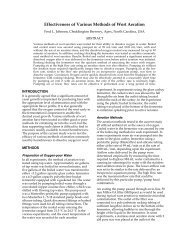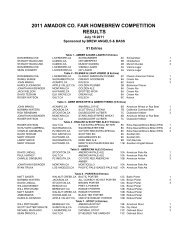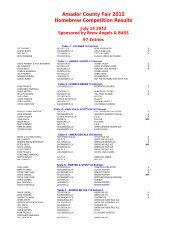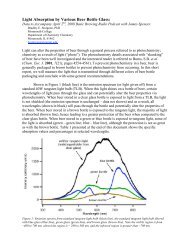A Homebrewer's Guide to Beer Flavor Descriptors - Brew Angels
A Homebrewer's Guide to Beer Flavor Descriptors - Brew Angels
A Homebrewer's Guide to Beer Flavor Descriptors - Brew Angels
Create successful ePaper yourself
Turn your PDF publications into a flip-book with our unique Google optimized e-Paper software.
phenols that impart a “medicine chest” flavor that<br />
is the subject of “troubleshooting." These can be<br />
tasted, yet they are best described by smell.<br />
Phenols are compounds that are built up from<br />
elements containing the following aromatic ring:<br />
Figure 1<br />
Chlorophenols are examples involving chlorine<br />
sidechains. Some of these have very powerful<br />
flavors with thresholds in the parts per billion<br />
range. Unfortunately, it is not uncommon for civic<br />
water supplies <strong>to</strong> contain these elements; moreover,<br />
they can partially survive the brewing process<br />
and be passed on in the finished beer. Small<br />
mash and sparge. These compounds are sometimes<br />
called tannins, a term without precise meaning<br />
in brewing except as a generic expression for<br />
polyphenols, i.e., phenols having a large number of<br />
complicated aromatic ring structures. Their primary<br />
relevance occurs in the finished beer where<br />
they can interact with proteins <strong>to</strong> form chill haze<br />
and permanent haze. If oxidized during the preparation<br />
of hot wort, they can oxidize fusel alcohols,<br />
fatty acids derived from wort trub and iso‐alpha<br />
acids in the finished beer.<br />
The final class of phenols important <strong>to</strong><br />
brewing, are those purposely created in the fermentation<br />
by yeast. Strains differ dramatically in<br />
their propensity <strong>to</strong> create these compounds. Aromatic<br />
alcohols, or what are sometimes called phenol<br />
alcohols, are examples. Tyrosol is typical, and<br />
has the following structure:<br />
Figure 2<br />
For most strains of brewing yeast this alcohol<br />
will be well below its threshold of 200 ppm. However,<br />
there are some strains where this is not the<br />
case, and a bitter chemical flavor <strong>to</strong>ne will be<br />
present.<br />
Another phenol that can result from the fermentation<br />
is 4‐vinyl guaiacol. Certain yeast<br />
strains—most notably variations of wild yeast<br />
like S. diastaticus—produce this compound from<br />
minor wort phenols. The following is typical:<br />
residuals from chlorine‐based sanitizers also have<br />
been implicated.<br />
Phenols can be extracted from malt during the<br />
Figure 3<br />
SPECIAL ISSUE 1987 ZYMURGY 47






